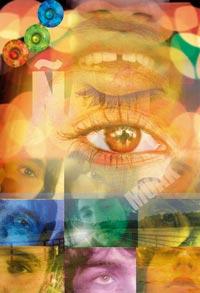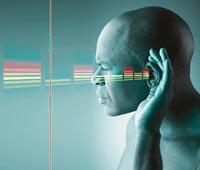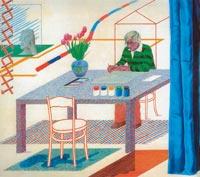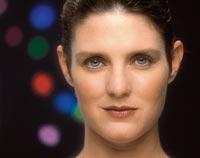The madness of the senses

The word Sinestesia comes from the Greek. Anesthesia means lack of sensation, while the prefix sen - means association or union. Therefore, the meaning of synesthesia is a unified perception. And that's what happens to those who suffer.
Some see appearances when listening to a sound. The opposite happens to others: seeing an object, in addition to perceiving colors, appearance and movement, they hear the sound. For them, therefore, that object has that sound, even if others do not hear anything. For some, certain flavors have a concrete appearance, such as mint flavor, shaped like smooth columns and cold touch, as if the columns were glass. At least this is the taste of mint for M.W.
They are all examples of belief. When it comes to telling their experiences, they do not use metaphors, they are
not doing literature: they really perceive and perceive it, they perceive it through the senses. Somehow, it is as if in those people the ways of the senses were crossed. In this way, it can happen that the information received by the eyes activates not only the center of the brain vision, but also that of the ear. Consequently, a visual, visual and auditory stimulus produces two types of responses to this person.

beliefs: auditory and visual.
This is one of the explanations given to belief. That is, the paths that the organs of the senses perform to the brain are crossed. But it is not the only explanation. However, scientists are clear that to understand what aesthetics is, all disciplines have to work together: genetics, neurology, psychology... When analyzed by a single party, a consistent explanation could not be given.
Same yes, but different
Not all believers mix or unite the same senses. The usual thing is to see the letters and numbers or words heard in color. In addition to words, other sounds or musical notes create colors for some. Some are affected by pain or smells, but that is quite rare. It is also rare to have a taste or tactile feeling when listening to a sound. But things like that also happen, and there are perceptions that come together or unite in another way.

However, although the cases are very varied, they have common characteristics. Among other things, scientists know that it is inherited and that transmission is associated with the X chromosome. Six women per man have a belief, but it is quite rare in the entire population. It is estimated that one in two thousand has belief. It appears in all cultures and places, and most believers are left.
Many associate belief with creativity and the fondness of art, especially because writer Vladimir Nabokov, composer Olivier Messiaen, painter David Hocney and other artists also believed it. However, the sense of art is not proper to those who have belief, at least, more than the rest.
On the other hand, their memory is very good and it seems that this additional information they receive helps them to be good. For example, a believer can say “I know it’s two numbers, because 2 is white.” Interviews, places, where everything is... have the ability to remember accurately. At the same time, most like things to be in place, ordered and ordered.

Despite their excellent memory, in some mathematical things they have gaps. For example, they struggle to correctly write a number spoken to the digits, tend to confuse right and left and have difficulty guessing the meaning of the arrows. However, belief hardly prevents thinking rationally.
Clinical diagnosis
In addition to these general characteristics, it happens to everyone that for those who have belief it is impossible or truly difficult to explain to others how they perceive reality. This, as well as the varied explanation of belief, greatly hinders the dissociation of phenomena such as diagnosis.

is not related to creativity or
art.
Despite the difficulties, XX. At the end of the 20th century, researcher Cytowick mentioned several keys to diagnosis. To begin with, belief is unwanted. The believer cannot prevent or avoid that perception. In addition, the crossing between the senses is unidirectional. Therefore, if someone produces a sound, the opposite does not happen: the sounds do not make him see the colors.
The knowledge that belief is projected also contributes to diagnosis. That is, who sees an image when listening to a sound, the image appears in the visual field, not in the eyes. At the same time, the listener does not feel the sound inside the ear, but around.
The perceptions of believers are permanent. That is, analyzing a believer now and within twenty years, he will give the same answer to the same stimulus. On the other hand, they are not very worked or pictorial perceptions, but basic ones. What they hear, see or touch while perceiving something is not complex; for example, those who experience belief in sight do not see a cultured landscape before the eyes, but
geometric forms.

other techniques that analyze brain activity help understand belief.
Belief is emotional and kept in memory. Perception is totally real for believers and they remember it accurately afterwards, so that when they happen again they realize that it is the same feeling as before. It should be noted that for someone with belief it makes no sense to wonder if for him it is not confusing that these sensations are collected at once. It is as if a blind man asked us if seeing colors, images and movement is not crazy.
In brain slits
In recent years, techniques reporting on brain activity have helped to better understand belief. Until the 1970s scanners were not used, so research was conducted with people who had lost part of the brain or its function. By relating the lost functions to the lost or injured parts, they could know which zone controlled each function.

New technologies to see brain activity have made great strides. For example, using PET technique and functional MRI have shown that Cytowick was wrong in saying that blood flow decreases in those areas of the brain that have belief.
Now scientists know that the flow of blood varies from person to person, but they have also realized why beliefs that combine hearing and vision against other combinations are so common. In fact, they have shown that in those who have this type of belief, before a visual or auditory stimulus, the flow of blood increases both in the ear and in the sight.
And, precisely, these areas are close to each other, which seems to facilitate the connections between the two. On the contrary, the smell and taste zones are far from the visual ones, perhaps for this reason it is more difficult to establish relations between both zones, so this type of belief is more rare.

According to some researchers, we all have beliefs. It seems that, while the brain is flexible, the senses are not so separate or specialized. This explains why six-month-old children see the same response in the cerebral cortex, listening to a loud sound or seeing a violent light. According to studies with puppies and mice, other mammals also have this peculiarity in newborns. In development, however, the connections between neurons are consolidated, flexibility is lost and the senses are more or less separated.
However, it seems that those who have belief retain that capacity. Psychoactive substances such as LSD or mescaline also generate perceptions similar to synaesthesia. So... Is belief a capacity we all have at first? How is that capacity lost and why
do some retain it? There are many questions to answer and not all scientists agree with the explanations they have given so far. But they will certainly continue to investigate, because the subject is as striking as it is interesting.
How many senses we have: 5, 21 or more?

Aristotle affirmed that man has five senses, taste, sight, smell, touch and sight. And this idea has remained to this day. But many of the perceptions we human beings have cannot be related to those senses, such as the perception of heat and cold, or hunger and thirst. And how do you realize the movement and posture of your own body with your eyes closed? Not at least with the view, but not with the other four.
More and more scientists claim that the senses are more than five. However, they do not agree to say how many and what they are. There are many who claim that there are ten: in addition to the usual five, pain, temperature, body posture and two senses related to movement and another that reports blood pressure.
Other scientists extend their range of senses to twenty-one. For this, among other things, they take into account that the taste is not the only one, but five — acid, bitter, sweet, salty and umami — and the view is divided into light and color. They also differentiate between cold and heat and consider that each has a meaning, and in the intracranial parameters also take into account thirst, hunger and oxygen concentration in the blood, among others. There are also scientists who believe that the list of senses is even longer and count thirty-three senses.
Furthermore, belief shows that the senses are not so limited and separate. Are they five, twenty-one or more? They have not agreed, but almost everyone believes that limiting to five is too tight.
The taste of light and the music of colors

Erik Weihenmayer lost his ability to see at the age of thirteen. However, today he uses the scissors well, easily grabs a ball that is being thrown and looks directly at the lit light. To do this they have done nothing in their eyes, no. Weihenmayer sees it now through the tongue. The
‘miracle’ has been performed at the College of Medicine of the University of Wisconsin (USA). To do this, they have placed Weihenmayer on the forehead a tool that turns the chiaroscuro into electric pulses. Under the tongue has a network of 144 electrodes. It is the size of a seal, to which come the electric pulses collected by the cup useful. The encoded image then acts on the tongue.
According to Weihenmayer, the first time he tested he felt a strange sensation, like small explosions. However, he soon realized that he also perceived something else: he had a perception of space, depth and appearance. Thanks to this, he sees the images, not as he saw them, but as well as to stretch his hand and catch a can of soda.

This representative technology of the senses, called BrainPort, aims to launch shortly to help people who have lost balance due to initial intraocular injuries and for blind people.
It seems that what once seemed science fiction is becoming a reality. It is not, moreover, the only technique that manages to replace the lost sense with another. In fact, in 2004, the Europrix Talentu Awards awarded the first prize of its section to Eye-Borg technology. Developed by researcher Adam Montandon, it allows to distinguish the colors between the greys, making the colors sound, to which they do not have the ability to see the colors. It works like BrainPort, but instead of going to the tongue the information goes into the ear. Neil Harbisson, who saw the world in black and white, now produces colorful paintings.
Buletina
Bidali zure helbide elektronikoa eta jaso asteroko buletina zure sarrera-ontzian











